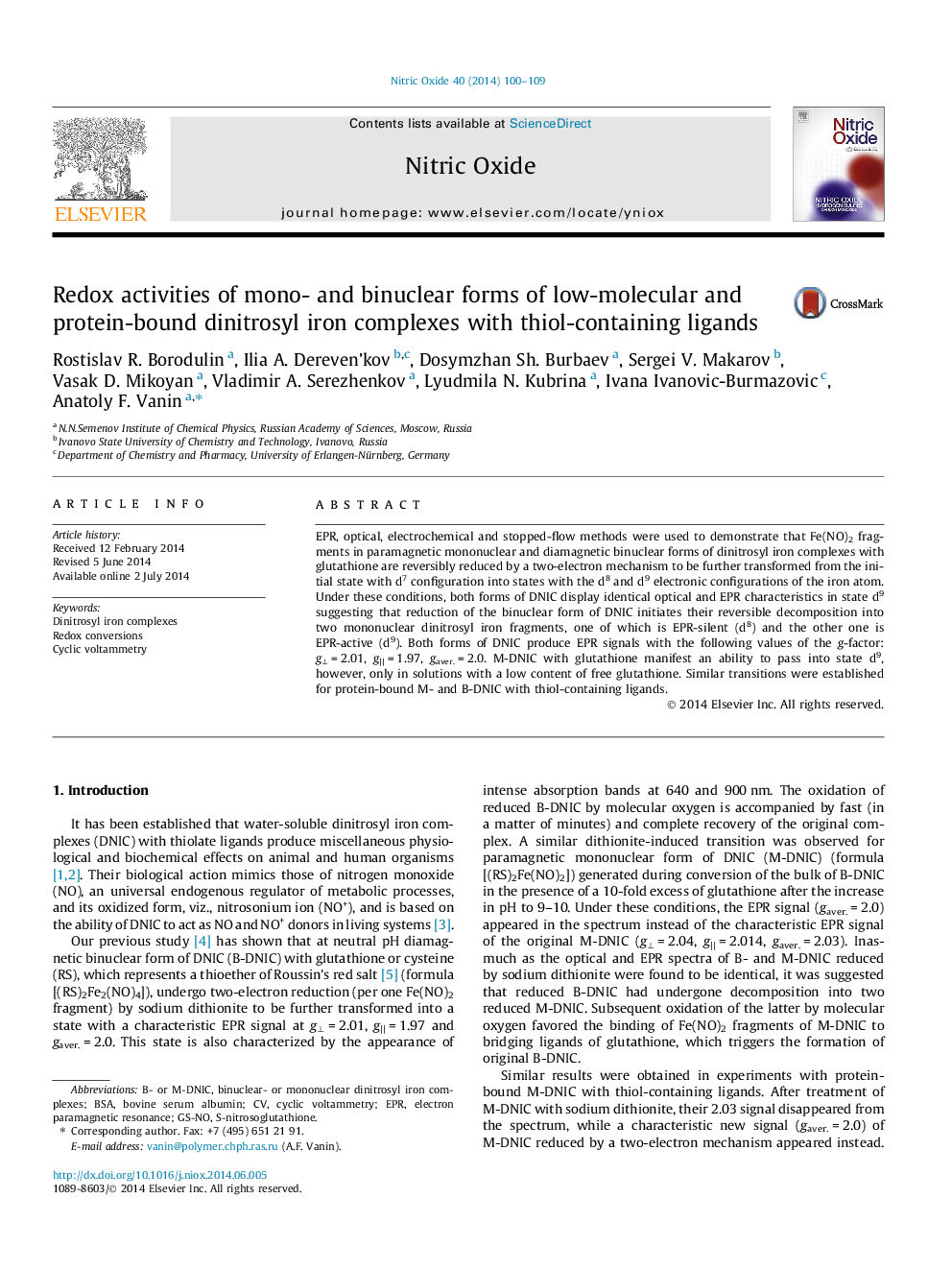| کد مقاله | کد نشریه | سال انتشار | مقاله انگلیسی | نسخه تمام متن |
|---|---|---|---|---|
| 2000665 | 1541619 | 2014 | 10 صفحه PDF | دانلود رایگان |

• B- and M-DNIC with glutathione can be reduced to d8 and d9 electronic states.
• M-DNIC can be reduced to d9 state only in solutions with low glutathione content.
• Protein-bound M- and B-DNIC can be also reduced to d8 and d9 electronic states.
EPR, optical, electrochemical and stopped-flow methods were used to demonstrate that Fe(NO)2 fragments in paramagnetic mononuclear and diamagnetic binuclear forms of dinitrosyl iron complexes with glutathione are reversibly reduced by a two-electron mechanism to be further transformed from the initial state with d7 configuration into states with the d8 and d9 electronic configurations of the iron atom. Under these conditions, both forms of DNIC display identical optical and EPR characteristics in state d9 suggesting that reduction of the binuclear form of DNIC initiates their reversible decomposition into two mononuclear dinitrosyl iron fragments, one of which is EPR-silent (d8) and the other one is EPR-active (d9). Both forms of DNIC produce EPR signals with the following values of the g-factor: g⊥ = 2.01, g|| = 1.97, gaver. = 2.0. M-DNIC with glutathione manifest an ability to pass into state d9, however, only in solutions with a low content of free glutathione. Similar transitions were established for protein-bound М- and B-DNIC with thiol-containing ligands.
Journal: Nitric Oxide - Volume 40, 31 August 2014, Pages 100–109